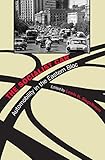The Socialist Car : Automobility in the Eastern Bloc / ed. by Lewis H. Siegelbaum.
Material type: TextPublisher: Ithaca, NY : Cornell University Press, [2013]Copyright date: ©2013Description: 1 online resource (256 p.) : 23 halftones, 7 tablesContent type:
TextPublisher: Ithaca, NY : Cornell University Press, [2013]Copyright date: ©2013Description: 1 online resource (256 p.) : 23 halftones, 7 tablesContent type: - 9780801477386
- 9780801463211
- Automobile industry and trade -- Social aspects -- Europe, Eastern -- History -- 20th century
- Automobile industry and trade -- Social aspects -- Soviet Union -- History
- Automobiles -- Social aspects -- Europe, Eastern -- History -- 20th century
- Automobiles -- Social aspects -- Soviet Union -- History
- Socialism and culture -- Europe, Eastern -- History -- 20th century
- Socialism and culture -- Soviet Union -- History
- History
- Soviet & East European History
- Urban Studies
- HISTORY / Russia & the Former Soviet Union
- 388.342094709045 23
- HE5662.9.A6 S63 2016
- online - DeGruyter
- Issued also in print.
| Item type | Current library | Call number | URL | Status | Notes | Barcode | |
|---|---|---|---|---|---|---|---|
 eBook
eBook
|
Biblioteca "Angelicum" Pont. Univ. S.Tommaso d'Aquino Nuvola online | online - DeGruyter (Browse shelf(Opens below)) | Online access | Not for loan (Accesso limitato) | Accesso per gli utenti autorizzati / Access for authorized users | (dgr)9780801463211 |
Frontmatter -- Contents -- Acknowledgments -- Introduction -- Part One: Socialist Cars and Systems of Production, Distribution, and Consumption -- 1. The Elusive People's Car: Imagined Automobility and Productive Practices along the "Czechoslovak Road to Socialism" (1945-1968) -- 2. Cars as Favors in People's Poland -- 3. Alternative Modernity? Everyday Practices of Elite Mobility in Communist Hungary, 1956-1980 -- Part Two: Mobility and Socialist Cities -- 4. Planning for Mobility: Designing City Centers and New Towns in the USSR and the GDR in the 1960s -- 5. Automobility in Yugoslavia between Urban Planner, Market, and Motorist: The Case of Belgrade, 1945-1972 -- 6. On the Streets of a Truck-Building City: Naberezhnye Chelny in the Brezhnev Era -- 7. Understanding a Car in the Context of a System: Trabants, Marzahn, and East German Socialism -- Part Three: Socialist Car Cultures and Automobility -- 8. The Common Heritage of the Socialist Car Culture -- 9. Autobasteln: Modifying, Maintaining, and Repairing Private Cars in the GDR, 1970-1990 -- 10. "Little Tsars of the Road": Soviet Truck Drivers and Automobility, 1920s-1980s -- 11. Women and Cars in Soviet and Russian Society -- Notes -- Notes on Contributors -- Index
restricted access online access with authorization star
http://purl.org/coar/access_right/c_16ec
Across the Soviet Bloc, from the 1960s until the collapse of communism, the automobile exemplified the tension between the ideological imperatives of political authorities and the aspirations of ordinary citizens. For the latter, the automobile was the ticket to personal freedom and a piece of the imagined consumer paradise of the West. For the authorities, the personal car was a private, mobile space that challenged the most basic assumptions of the collectivity. The "socialist car"-and the car culture that built up around it-was the result of an always unstable compromise between official ideology, available resources, and the desires of an increasingly restless citizenry. In The Socialist Car, eleven scholars from Europe and North America explore in vivid detail the interface between the motorcar and the state socialist countries of Eastern Europe, including the USSR.In addition to the metal, glass, upholstery, and plastic from which the Ladas, Dacias, Trabants, and other still extant but aging models were fabricated, the socialist car embodied East Europeans' longings and compromises, hopes and disappointments. The socialist car represented both aspirations of overcoming the technological gap between the capitalist first and socialist second worlds and dreams of enhancing personal mobility and status. Certain features of automobility-shortages and privileges, waiting lists and lack of readily available credit, the inadequacy of streets and highways-prevailed across the Soviet Bloc. In this collective history, the authors put aside both ridicule and nostalgia in the interest of trying to understand the socialist car in its own context.Contributors: Elke Beyer, Swiss Institute of Technology; Valentina Fava, Helsinki Collegium for Advanced Studies and University of Helsinki; Luminita Gatejel, European University Institute, Florence; Mariusz Jastrzab, Kozminski University; Corinna Kuhr-Korolev, University of Bochum; Brigitte Le Normand, Indiana University Southeast; Esther Meier, University of the Federal Armed Forces, Hamburg; Kurt Möser, Karlsruhe Institute of Technology; György Péteri, Norwegian University of Science and Technology, Trondheim; Eli Rubin, Western Michigan University; Lewis H. Siegelbaum, Michigan State University
Issued also in print.
Mode of access: Internet via World Wide Web.
In English.
Description based on online resource; title from PDF title page (publisher's Web site, viewed 02. Mrz 2022)


